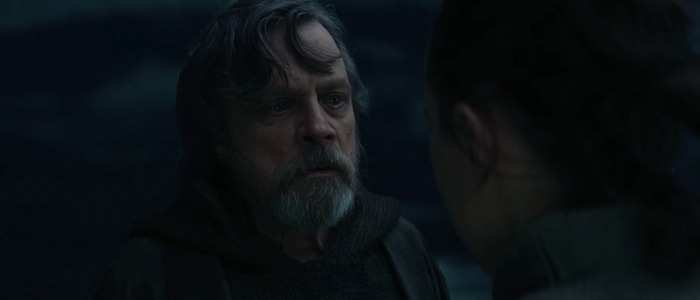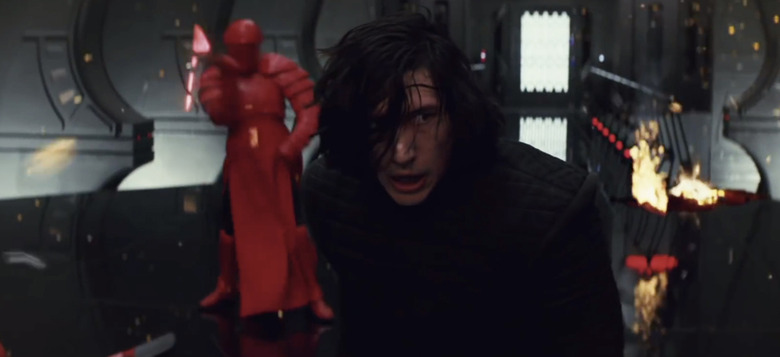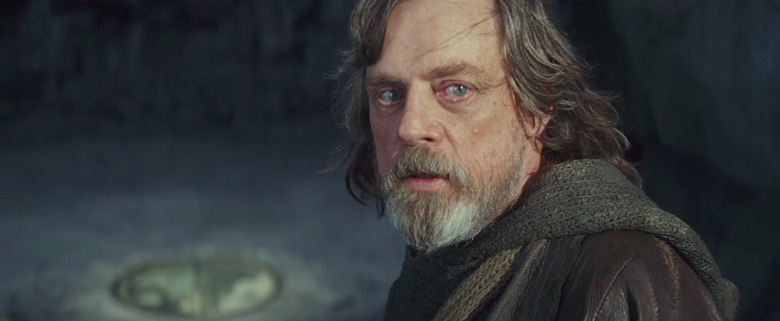What 'Star Wars: The Last Jedi' Borrows From Akira Kurosawa's 'Rashomon'
(Welcome to The Movies That Made Star Wars, a series where we explore the films that inspired George Lucas' iconic universe. In this edition: Akira Kurosawa's Rashomon.)
1950's Rashomon was the first international breakout hit for legendary Japanese director Akira Kurosawa. He'd made wonderful films prior to that, from the tense post-war poverty of Drunken Angel to the noir classic Stray Dog, but Rashomon put him on the international map, winning the Academy Award for Best Foreign Language Film. Like Citizen Kane before it, the film revealed what was possible within the medium.
Starring Toshiro Mifune (who turned down the roles of Obi-Wan Kenobi and Darth Vader in the original Star Wars) and Takashi Shimura, among others, Rashomon tells the story of a rape and murder over and over again from the perspective of several witnesses. The conceit is that the story changes every time it is told – everyone is convinced that they themselves are the guilty party.
From a Certain Point of View
What unfolds is a series of vignettes that retell the same series of events, but the story itself changes every single time. By the end of the film, the viewer is left wondering what was the truth and what was a matter of perception. Since audiences are so accustomed to seeing a film represent the objective truth of a situation, it's difficult for us to reconcile the different accounts. The movie leaves us with an uneasy feeling and the wonder of a question: "What is truth?"
Kurosawa's work has influenced Star Wars from the very beginning and George Lucas offered hints of Rashomon through the classic trilogy. But it was Rian Johnson, director of Star Wars: The Last Jedi, who brought it to the forefront.
"Luke, you're going to find that many of the truths we cling to depend greatly on our own point of view," the spirit of Obi-Wan Kenobi says to Luke Skywalker in the swamps of Dagobah in Return of the Jedi. Obi-Wan is speaking about the Rashomon-like view Luke has of his father, but he could have just as easily been speaking as an observer of the movie Rashomon itself. In A New Hope, we're told from Obi-Wan's perspective that Vader betrayed and murdered Luke's father. In The Empire Strikes Back, Vader's perspective is that he is Luke's father. We as an audience are left with that same question of truth, wondering who is right. In Return of the Jedi, Yoda offers a third version, but we're still left wondering about our own point of view. It's not until the flashbacks of the prequels that we get a more objective view of Luke's parentage.
In The Last Jedi, we're treated to a miniaturized version of Rashomon buried in the context of the film, all involving Luke Skywalker, his confrontation with Ben Solo, and the fight between them. Luke is our first narrator, obscuring the parts of the story from Rey that give him shame. There are no lightsabers involved and Ben flies off the handle with virtually no provocation. In the second version, Ben is given the position of narrator and the Luke we see is altogether different. He's drawn a lightsaber and has the dark eyes and angered face of a Sith about him, just as Darth Vader did when destroying the Jedi. The third version is offered to Rey only after she confronts Luke, a sort of mea culpa. Luke takes threads from the first and second versions and offers us a third.
Which is true?
We're left to decide on our own.
The True Enemy
In The Art of the Last Jedi, Rian Johnson explained that this triptych of scenes were one of the last things to go into the script before shooting began. "It's similar to Rashomon, but the actual story motivation was that I wanted some harder kick to Rey's turn. Ultimately, the only one who lies is Luke, in the very first flashback, where he omits the fact that he had a lightsaber in his hand. Kylo is basically telling the truth about his perception of the moment."
The film takes this idea and moves it deeper into the text, allowing a group of characters to witness a vision in the same way that is withheld from the audience. Rey and Ben Solo, with their minds bridged by Supreme Leader Snoke, are party to a vision that makes Rey believe that Ben will turn to the light and makes Ben believe that Rey will turn to the dark. In the end, they join each other temporarily to defeat the Praetorian guard, but their alliance goes no further and brooks a wider rift. Bearing witness to this, each of them comes to a different conclusion, shaded by their subjectivity. Snoke further exemplifies this idea when he sees Ben killing "his true enemy," letting his point of view blind him from the fact that he was the true enemy.
Combining these perspective techniques through memories, flashback, and Force visions offer us a depth to what Obi-Wan spoke of in a more concentrated fashion, and it's to the benefit of the film. In his review of Rashomon, Roger Ebert wrote "Because we see the events in flashbacks, we assume they reflect truth. But all they reflect is a point of view, sometimes lied about. Smart films know this, less ambitious films do not. Many films that use a flashback only to fill in information are lazy."
And The Last Jedi is anything but lazy.
Downpour
Another, less often talked about technique from Rashomon that also made its way into The Last Jedi is the use of the weather, particularly the rain, to help set the mood of the story. Rashomon begins in the ruins of the Rashomon Gate in Kyoto, a battered wood and stone structure, hammered by a storm. Inside, the woodcutter and a priest solemnly recount the tales to a peasant in their depression. The rain delineates past from present, but it also adds a dour mood to the proceedings. It's a technique that Kurosawa would improve upon in Seven Samurai just four years later, where the climax would play out in the rain to heighten the tension.
In The Last Jedi, Rian Johnson brings this technique a step further in Rey's confrontation with Luke. The rain begins as Luke comes down the mountain, seeking Rey out after his reconnection through the Force with his sister. He's hurried and in turmoil and the rain helps reflect this. When Luke catches Rey and Ben Solo having their own connecting moment, he blows apart the stone hovel, banishing Ben Solo and bringing the turmoil he felt to Rey herself. But she confronts him and their duel is enhanced by the rain, adding aggression to the scene, and at the climax, Luke reveals that third part of the flashback sequence.
Johnson uses the rain to advance time in the sequence as well. Soaked in rainwater, Rey offers Luke one last chance to take up his old lightsaber in the fight against the First Order. He refuses and it cuts to a shot where the storm has calmed. We know time has passed because Luke is now in dry clothes, watching Rey take off in the Falcon. But we know the storm clouds have remained, threatening to pour at any moment, and it's these clouds Yoda uses to call down lightning to destroy the Jedi library, the weather once more playing a key, Kurosawa-like role in the telling of the story.
For Star Wars fans, revisiting Rashomon will give them a new perspective on the filmmaking techniques Rian Johnson employed in The Last Jedi, as well as hints of the inspiration George Lucas used to craft the six classic installments of the Skywalker saga.
Rashomon is available widely on Blu-ray and DVD from the Criterion Collection and is available to rent on most streaming services or free with a Filmstruck account.



